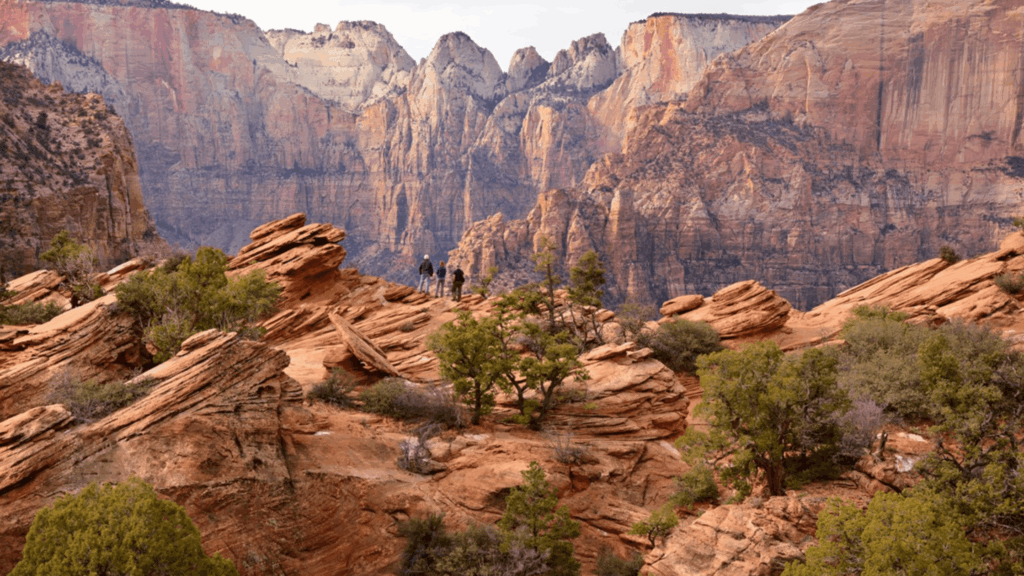The Best Time to Visit Zion: A Month-by-Month Breakdown
Zion National Park beckons adventurers year-round with its towering sandstone cliffs, emerald pools, and slot canyons that seem to hold ancient secrets. Yet each season paints this Utah masterpiece in different hues, offering unique rewards for those who know when to arrive. Whether you’re drawn by wildflower blooms, perfect hiking weather, or the serene beauty of snow-dusted peaks, understanding Zion’s seasonal rhythms will transform your visit from memorable to extraordinary.
Planning your Zion adventure means more than choosing dates on a calendar—it’s about aligning your travel dreams with nature’s schedule. From the bustling energy of peak spring months to the contemplative quiet of winter, each period offers distinct advantages for hiking, photography, and wildlife viewing. The best time to visit Zion ultimately depends on what calls to your adventurous spirit.
For those seeking a year-round base camp for their Zion explorations, Zion White Bison Resort offers luxury accommodations just minutes from the park entrance, providing comfort and convenience regardless of season.
Spring: March to May
Spring awakens Zion with a symphony of flowing water and emerging life. March brings cool mornings perfect for photography, with temperatures ranging from 45°F to 65°F. The Virgin River runs high with snowmelt, creating dramatic waterfalls and making some river hikes temporarily inaccessible.
April marks the sweet spot for many visitors. Wildflowers begin their show—desert marigolds, Indian paintbrush, and prickly pear cactus blooms dot the landscape. Daytime temperatures climb to a comfortable 60°F to 75°F range, ideal for popular trails like Angel’s Landing and the Emerald Pools. However, April also signals the beginning of Zion’s busy season, so early morning starts become essential for securing parking and avoiding crowds.
May intensifies both the beauty and the bustle. This is arguably the best time to visit Zion for hiking enthusiasts. Weather conditions are nearly perfect—warm but not scorching, with clear skies dominating most days. The downside? May is Zion’s most crowded month. Parking fills by 8 AM, and popular trails can feel like rush hour. Wildlife viewing peaks during these months as animals emerge from winter retreats, making it an excellent time for patient observers.
Summer: June to August
Summer transforms Zion into a land of extremes. June temperatures soar past 90°F, with July and August regularly exceeding 100°F. The heat creates challenging conditions for traditional hiking but opens opportunities for unique experiences. Early morning adventures become not just preferable but necessary—sunrise hikes offer cooler temperatures and fewer crowds.
The Narrows becomes the star attraction during summer months. Wading through the Virgin River provides natural air conditioning, making this slot canyon hike the best time to visit Zion’s most famous water adventure. The river levels typically stabilize by late June, offering safer conditions for the full Narrows experience.
Photography enthusiasts will find summer’s golden hour extended, with dramatic lighting painting the canyon walls from sunrise until well past sunset. However, midday photography becomes challenging due to harsh shadows and extreme contrast. Wildlife retreats to shaded areas during peak heat, making early morning and evening the prime viewing windows.
Fall: September to November
September begins Zion’s second golden season. Temperatures moderate to comfortable hiking ranges—80°F to 85°F during the day, cooling to pleasant evenings perfect for campfires. This is widely considered the best time to visit Zion for those seeking balance between ideal weather and manageable crowds.
October delivers Zion’s most spectacular color show. Cottonwoods along the Virgin River explode in golden yellows, creating stunning contrasts against red sandstone cliffs. The weather remains perfect for hiking, with daytime temperatures in the 70s and crisp, clear nights ideal for stargazing. Wildlife activity increases as animals prepare for winter, offering excellent opportunities for photography.
November transitions toward winter’s quiet season. Early November extends the perfect hiking weather, while late November can bring the first frost and occasional snow to higher elevations. Crowds thin significantly after the first week, making this an excellent time for those seeking solitude among Zion’s grandeur.
Winter: December to February
Winter reveals Zion’s contemplative side. Snow caps the high peaks while the canyon floor remains accessible, creating a magical landscape that few visitors experience. December through February offers the best time to visit Zion for solitude seekers and winter photography enthusiasts.
Temperatures range from 30°F to 50°F, making hiking still possible with proper layering. Some higher elevation trails may require microspikes, but classics like Canyon Junction Bridge and Riverside Walk remain accessible. The low-angle winter sun creates extraordinary lighting conditions, especially for photographers seeking dramatic shadows and warm sandstone colors.
Wildlife viewing takes on a different character in winter. Desert bighorn sheep become more visible as they descend to lower elevations, and bird watching improves as migratory species arrive. The near-absence of crowds means you might have iconic viewpoints entirely to yourself—a rare gift in one of America’s most popular national parks.
https://www.instagram.com/p/DLGbyxZxeZ4/
Seasonal Considerations for Your Zion Adventure
Hiking Strategy by Season
Summer hiking requires dawn starts and plenty of water—plan for one gallon per person for longer trails. Spring and fall offer all-day hiking opportunities but demand reservations for popular trails. Winter hiking provides solitude but requires weather awareness and appropriate gear.
Photography Opportunities
The best time to visit Zion for photography varies by creative vision. Spring offers wildflowers and waterfalls, summer provides dramatic storm light, fall delivers golden cottonwoods, and winter creates unique snow-capped compositions. Each season demands different techniques and timing.
Wildlife Viewing
Spring migration brings diverse bird species, while summer pushes wildlife activity to dawn and dusk hours. Fall sees increased animal movement as winter preparations begin, and winter offers the best bighorn sheep viewing opportunities.
Planning Your Zion Experience
Accommodation Strategy
Staying near the park entrance maximizes your time exploring while minimizing daily commutes. Zion White Bison Resort provides year-round luxury accommodations just minutes from Zion’s gates, offering everything from glamping teepees to RV sites. The resort’s proximity means you can return for midday rest during summer heat or enjoy evening campfires after winter hikes.
Booking Timeline
Spring and fall reservations should be made 3-4 months in advance, especially for weekends. Summer accommodations near Zion fill quickly despite the heat. Winter offers the most flexibility for last-minute trips. Permits for specific hikes like Angel’s Landing require advance planning regardless of season.
Transportation Considerations
Zion’s shuttle system operates year-round but with reduced frequency in winter. Peak season means arriving early for parking, while winter visitors might find themselves among the only vehicles in the lot. Some higher elevation roads may close during winter storms, affecting access to certain viewpoints.
Your Zion Journey Awaits
The best time to visit Zion isn’t determined by a calendar—it’s discovered by understanding your own travel dreams and matching them with nature’s schedule. Spring hikers find wildflower meadows and perfect temperatures. Summer adventurers embrace the challenge of desert heat for unique experiences like The Narrows. Fall visitors capture golden cottonwoods and comfortable weather. Winter explorers discover solitude and ethereal snow-dusted landscapes.
Each season writes its own story across Zion’s magnificent canvas. The question isn’t when you should visit, but what story you want to create among these ancient cliffs and sacred spaces. Whether you’re drawn by the accessibility of mild weather or the exclusivity of winter solitude, Zion National Park offers transformative experiences twelve months a year.
Your adventure begins with a single step—and the perfect timing to match your vision of what makes Zion unforgettable. Book your stay at Zion White Bison Resort today.

